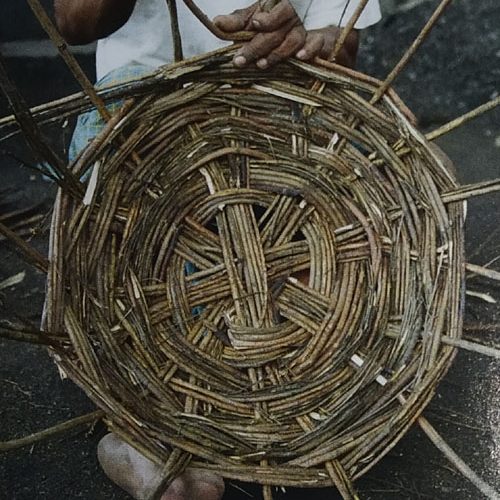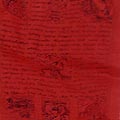In Uttar Pradesh, plant stalks and tree branches are woven into baskets. In the eastern part of the state, Arhar or pigeon pea provides lentil and once harvested, the main stalk of the arhar is woven into baskets. These baskets are used by vegetable sellers, gardeners and construction workers.
For basket weaving, the stalk and branches are first soaked in the pond for a maximum of two days, so that the fibre swells and becomes flexible. The thicker branches or the main stem form the stake element which is rigid and yielding. The strand is flexible and is manipulated in a spiral. The ends at the rim are folded back into the weave. Accordingly, the thicker branches act as the warp and the thinner ones as the entwining weft. The tools used for weaving baskets are the churra/a large knife and churri/a small knife.
In the western part of the state, the process of basket weaving in dehati or village parlance is known as bardana. The women split the wood and the men weave the baskets. Fifteen strips of wood are laid down in pairs at a thirty-degree angle from each other. Then the craftsperson sits at the centre of the arrangement and weaves one strip into the rest of the strips laid out in a circular manner. In this way, first, the base is made and then the wall of a basket is worked upon. A hasiya or sickle is used to trim away splinters.
This basket, called pittoo, is woven in the village of Mahmoodpur Nagariya in western Uttar Pradesh and is used for storing and transporting mangoes.
Gallery
YOUR VIEWS
PRACTITIONERS: INDIA
Access 70,000+ practitioners in 2500+ crafts across India.
BIBLIOGRAPHY
10,000+ listings on arts, crafts, design, heritage, culture etc.
GLOSSARY
Rich and often unfamiliar vocabulary of crafts and textiles.
SHOP at India InCH
Needs to be written.





